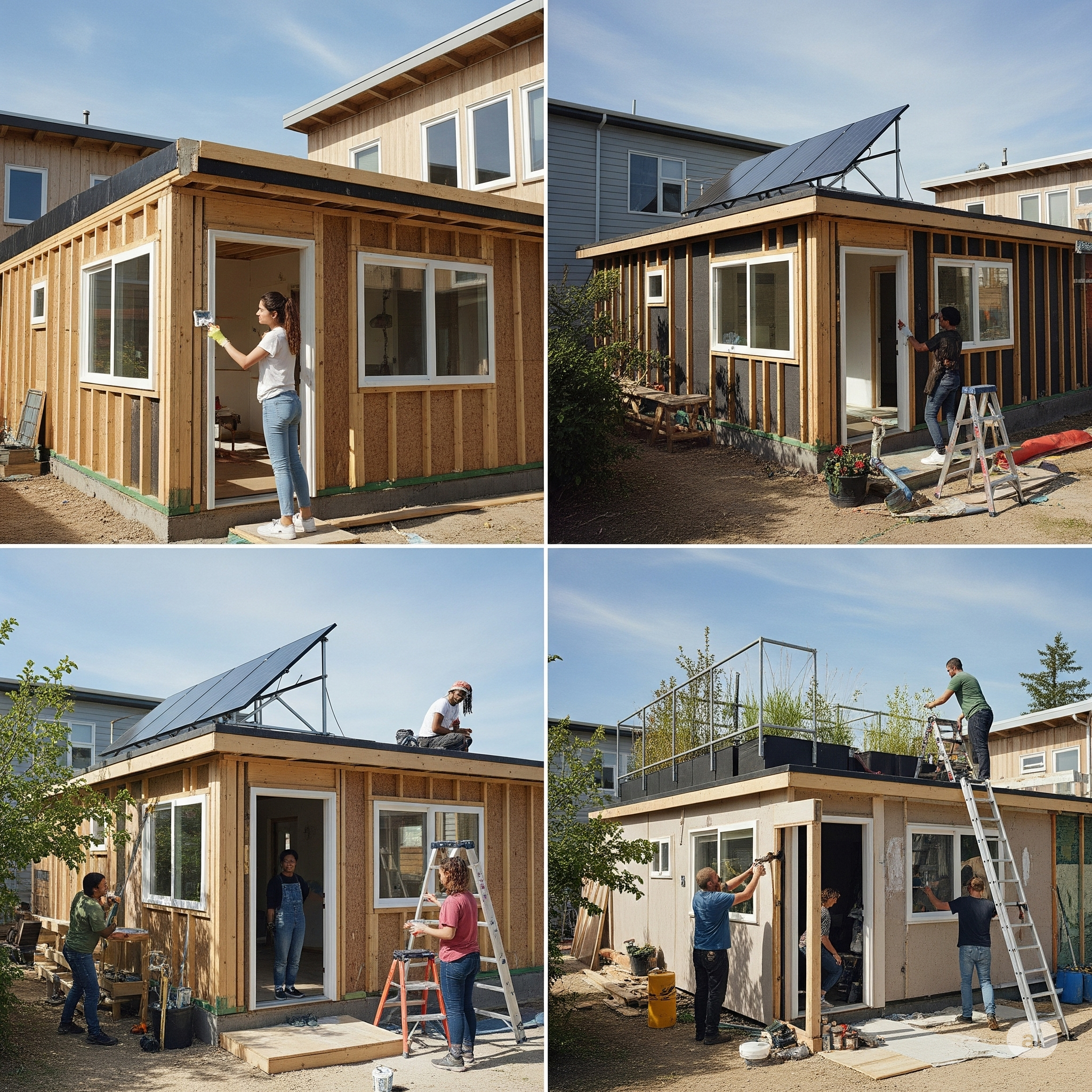In the face of rapid urbanization, growing populations, and limited resources, one housing strategy is proving both practical and empowering: incremental housing.
This approach, which allows people to build their homes gradually over time based on their financial ability and evolving needs, offers a realistic and sustainable solution to the global housing crisis particularly for low- and middle-income earners in developing countries like Kenya.
As cities struggle with housing shortages and rising costs, incremental housing provides a pathway to ownership, dignity, and security without requiring massive upfront investment. It respects people’s agency, recognizes their priorities, and accommodates growth in a way few conventional housing models can match.
What is Incremental Housing?
Incremental housing is a process in which individuals or families start with a basic housing unit and progressively expand or improve it over time. Rather than waiting to afford a fully built home, households can:
- Construct a basic structure (shelter core)
- Expand additional rooms or floors later
- Upgrade materials and finishes gradually
- Add essential infrastructure like electricity or plumbing when affordable
This model contrasts with conventional housing developments that require significant capital and deliver completed homes all at once—often pricing out a large portion of the population.
Why Incremental Housing Matters
- Affordability
Many urban residents, especially in informal sectors, cannot afford full housing units upfront. Incremental housing allows them to build in phases, managing costs over time. - Flexibility
As families grow or incomes improve, homeowners can modify their houses to suit their evolving needs. This adaptability makes incremental housing extremely sustainable. - Empowerment and Ownership
Building a home incrementally gives residents a sense of control and achievement. It also reduces dependence on external actors or formal markets. - Lower Risk of Displacement
Unlike rental arrangements or informal squatting, even a small self-built home offers a sense of security. With legal tenure, residents are less likely to face eviction. - Urban Inclusion
Incremental housing can be integrated into formal planning through site-and-service schemes, encouraging inclusive urban growth.
Examples of Incremental Housing Around the World
- Chile’s “Half a Good House” Model (Elemental): Architect Alejandro Aravena’s concept provides a structurally sound, half-built house that families can expand. It’s a blend of design, affordability, and self-determination.
- India’s Slum Redevelopment: Some urban housing schemes have supported incremental upgrades by providing basic infrastructure like roads, sewage, and electricity, allowing residents to build quality homes over time.
- Kenya’s Site and Service Projects: Earlier initiatives such as Dandora in Nairobi attempted to provide serviced plots for self-building. Though not without flaws, they laid the groundwork for community-driven development.
Key Components of Successful Incremental Housing
- Land Tenure Security
Residents must feel confident that they won’t be evicted before investing in long-term improvements. Legal ownership or long-term leases are essential. - Basic Infrastructure (Site and Services)
Providing roads, drainage, water, sanitation, and electricity from the start enables households to focus on building safely and efficiently. - Building Regulations That Encourage Growth
Flexible planning and building codes should accommodate step-by-step development. Strict codes designed for complete homes can undermine the process. - Access to Finance
Microloans, community savings groups, and cooperative housing funds can help families finance each phase of construction without falling into debt traps. - Technical Assistance
Architectural guidance, community training, or public-private partnerships can improve design, safety, and quality—preventing slum-like conditions.
Challenges and Misconceptions
- Perception of Poor Quality
Incremental housing is often mistaken for temporary or substandard shelter. However, with proper planning and materials, it can be just as robust and attractive as conventional homes. - Lack of Policy Support
Many governments still focus on complete housing units or eviction-based solutions rather than supporting phased self-building efforts. - Market Pressures and Land Speculation
As areas with incremental housing improve, they can attract developers or gentrification, potentially pushing out the very communities that built them. - Coordination with Urban Services
Without city-wide planning, incremental settlements may lack connectivity to schools, healthcare, or transport limiting residents’ quality of life.
The Role of Local Governments and Planners
Local authorities can make or break incremental housing success. Supportive policies should include:
- Allocating affordable land for low-income earners
- Facilitating infrastructure before or alongside housing development
- Offering subsidies, building material banks, or technical support
- Creating legal frameworks for plot subdivision and flexible tenure
Urban planners must recognize that people-driven development is not just a fallback for the poor it’s a model of resilience, customization, and affordability.
Incremental Housing and Sustainable Development Goals (SDGs)
Incremental housing directly contributes to multiple SDGs:
- SDG 11: Sustainable Cities and Communities – By promoting affordable, inclusive, and safe housing.
- SDG 1: No Poverty – As housing is both a basic need and an asset that builds wealth.
- SDG 9: Industry, Innovation, and Infrastructure – When supported by innovative finance, local materials, and community participation.
Embracing a People-Centered Housing Future
Incremental housing is not about cutting corners it’s about meeting people where they are. It acknowledges the realities of limited income, rising land prices, and urban sprawl, while empowering communities to build better futures one brick at a time.
For governments, developers, and planners, the lesson is clear: instead of waiting to deliver perfect housing, support people in building what they can, when they can safely, legally, and affordably. With the right policies and partnerships, incremental housing could be one of the most effective tools for addressing the housing crisis in Kenya and beyond.
Urban resilience begins at home sometimes, with just four walls and a dream.

